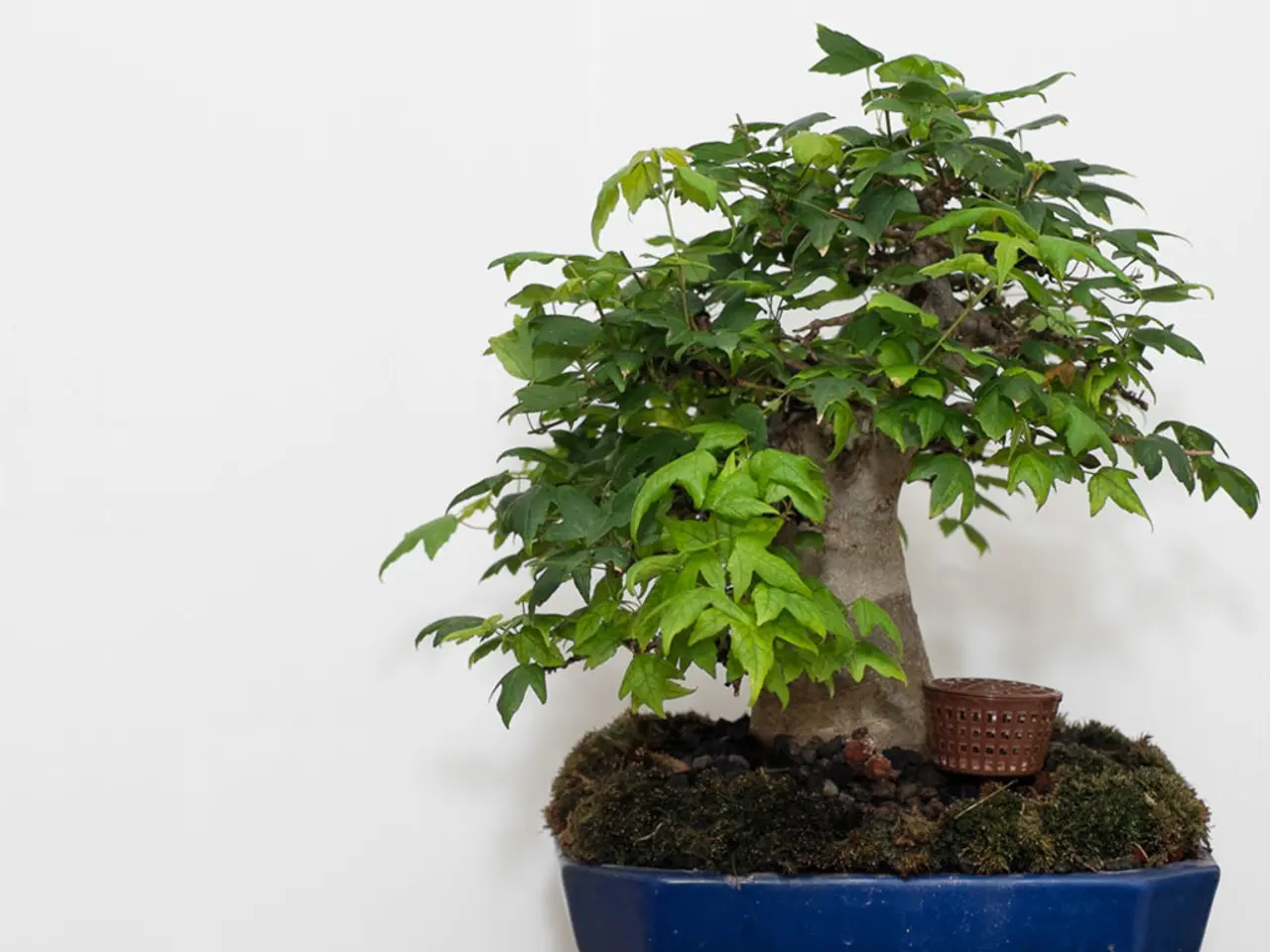Encountering Troubles in Bonsai Cultivation: Identifying and Resolving Typical Issues
Bonsai trees, with their delicate beauty and intricate shapes, require careful attention to maintain their health and vibrancy. Two common issues that can affect the well-being of a bonsai tree are over-watering and under-watering.
**Over-watering: The Dangers of Too Much H2O**
Over-watering a bonsai tree can lead to a host of problems, primarily yellowing leaves, rotten roots, and soggy soil. This occurs when the tree is watered excessively without allowing the soil to dry out, or when the soil remains waterlogged due to poor drainage or a soil mix that retains too much moisture.
The symptoms of over-watering are evident in the tree's appearance. The soil may remain constantly wet or swampy, and the roots can become soft, rotten, brown, or black, often with a foul smell indicating root rot. Leaves may turn yellow, curl, and drop prematurely, appearing light green or yellow instead of the usual vibrant green.
To remedy over-watering, it's essential to ensure pots have good drainage, use a well-draining bonsai soil mix, and water only when the top half-inch of soil is slightly dry. Avoid watering again if the soil is still swampy, and monitor the tree for signs of root rot, treating it with appropriate fungicides if diagnosed.
**Under-watering: The Perils of Too Little H2O**
On the other hand, under-watering can cause the leaves to wilt, turn crispy, dry out, and fall off. This occurs when the soil becomes bone-dry for extended periods or when the tree is not watered frequently enough.
Symptoms of under-watering include a dry, very dry soil appearance, and the tree's roots not being able to uptake moisture effectively. The tree may weaken overall and develop fungal diseases such as powdery mildew.
To address under-watering, it's crucial to water thoroughly as soon as bone-dry soil is detected. Maintain a consistent watering schedule suited to the bonsai species and environment, and avoid allowing the soil to dry out completely between waterings.
In summary, over-watering typically causes yellowing leaves, rotten roots, and soggy soil, while under-watering results in dry, crispy, wilting leaves and dry soil. Proper watering involves checking soil moisture regularly and using suitable soil and drainage to keep bonsai trees healthy and thriving.
[1] Bonsai4me.com, Bonsai Care: Over-watering and Under-watering, [online] Available at: https://www.bonsai4me.com/bonsai-care/overwatering-underwatering
[2] Bonsai Empire, Bonsai Overwatering: Symptoms, Causes, and Solutions, [online] Available at: https://www.bonsaiempire.com/bonsai-info/bonsai-overwatering/
[3] The Bonsai Guy, Bonsai Underwatering: Symptoms, Causes, and Solutions, [online] Available at: https://www.thebonsaiguy.com/bonsai-underwatering/
Maintaining a home-and-garden lifestyle that incorporates indoor bonsai requires careful resources and attention to their care. To ensure the health of a bonsai tree, it's crucial to avoid both over-watering and under-watering, as each can negatively impact the tree's appearance and overall well-being. By following the guidelines on suitable watering, soil, and drainage, one can create a vibrant and thriving home-gardening environment with their bonsai plants.




